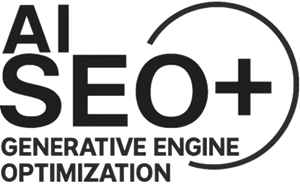How Generative AI Content Impacts E-E-A-T and SEO

The rise of generative AI tools like ChatGPT, Gemini, Claude, and Copy.ai has reshaped how content is created at scale. While AI-generated content can be efficient and cost-effective, it also introduces questions about quality, trust, and SEO compliance. This is where Google’s E-E-A-T framework — Experience, Expertise, Authority, and Trust — becomes more important than ever.
In this blog, we’ll explore how generative AI content impacts your SEO performance, how it aligns or conflicts with E-E-A-T principles, and how to use AI effectively while maintaining search rankings and credibility.
What is E-E-A-T in SEO?
E-E-A-T stands for:
- Experience: Has the content creator personally experienced the topic?
- Expertise: Is the content accurate and written by someone knowledgeable?
- Authority: Is the source a recognized authority in its field?
- Trustworthiness: Can the content and site be trusted by users and search engines?
Google introduced E-E-A-T as part of its Search Quality Evaluator Guidelines, and it plays a crucial role in how content is ranked — especially for YMYL (Your Money or Your Life) topics like health, finance, and safety.
How Generative AI is Used in SEO Content Creation
Marketers and content teams are increasingly turning to generative AI to produce:
- Blog articles
- Product descriptions
- FAQs and how-tos
- Landing page copy
- SEO meta tags and snippets
AI can help you generate content faster and in larger volumes. But if not handled carefully, it can dilute your site’s E-E-A-T signals and negatively impact SEO.
Challenges of AI-Generated Content for E-E-A-T
1. Lack of Real Human Experience
AI doesn’t have lived experience. If your content lacks firsthand knowledge or personal insights, it may fail to demonstrate “experience” — a key ranking signal in Google’s eyes.
2. Shallow or Generic Expertise
While AI can simulate expert tone, it often lacks deep domain knowledge, up-to-date facts, or nuanced insights. This puts your “expertise” score at risk, especially on technical or regulated topics.
3. Weak Author Attribution
Many AI-generated posts don’t list a real author. Without a credible byline and bio, the content may not establish authority or trustworthiness, particularly in YMYL niches.
4. Duplicate or Unoriginal Content
AI models are trained on existing data. This can lead to regurgitated, generic, or duplicated content — which search engines can detect and may penalize.
Best Practices: Using AI While Maintaining E-E-A-T
1. Humanize and Edit All AI Content
Never publish raw AI output. Use it as a first draft, then refine with human touch:
- Add personal stories or professional experience
- Insert statistics, quotes, or case studies
- Use your brand tone and voice
This makes content feel authentic, trustworthy, and engaging — key E-E-A-T signals.
2. Add Credible Author Byline and Bio
Assign AI-written articles to a real author. Include a short author bio with:
- Name and credentials
- Professional background or expertise
- Links to social profiles or author pages
For Google and users, this builds trust and authority.
3. Fact-Check Every AI Output
AI can make factual errors. Always verify:
- Statistics, dates, and figures
- Legal, medical, or financial claims
- Links and sources mentioned
Use fact-checking tools like Snopes, official websites, and Google Scholar to validate your content.
4. Use Schema Markup to Reinforce E-E-A-T
Structured data helps search engines understand your content better. Implement:
Authorschema with credentialsArticleorBlog PostingschemaOrganizationschema with logo and contact info
This improves visibility in rich results and enhances trust signals.
5. Blend AI Content with Human-Created Pages
Use AI to support, not replace, your team. For example:
- Let humans write core thought-leadership content
- Use AI for outlines, summaries, or FAQs
- Mix human-generated visuals or interviews with AI text
This keeps your content strategy strong, diverse, and aligned with E-E-A-T.
How Google Treats AI-Generated Content
Google is not against AI-written content. However, it clearly states:
“Using automation—including AI—to generate content with the primary purpose of manipulating ranking in search results is a violation of our spam policies.” – Google Search Central
This means that high-quality AI content that’s helpful, original, and trustworthy is allowed. Poorly generated, mass-produced, or misleading content is not.
Measuring E-E-A-T in Practice
While there’s no official E-E-A-T score, you can track its impact through:
- Organic traffic trends after core updates
- Time on page and bounce rates (indicates quality)
- Backlinks and mentions from authoritative sites
- Author pages visibility in SERP
Google’s Quality Raters also use E-E-A-T to assess site content, especially for YMYL queries. Keeping these elements strong helps you perform better in evaluations and algorithm shifts.
Examples of AI Content Supporting E-E-A-T (When Done Right)
- HubSpot: Uses AI to scale topic clusters, but ensures content is reviewed by internal experts and includes author bios.
- Healthline: AI-assisted outlines, human-written medical content, medically reviewed, and tagged with doctor credentials.
- Shopify: AI-generated product guides with real merchant quotes and case studies added.
These brands balance AI scale with human authority, and consistently rank high in Google search results.
The Future of SEO with Generative AI
As AI continues to evolve, content creation will become more automated. But search engines will continue to prioritize quality, depth, and trustworthiness. The best approach is hybrid:
- Use AI for speed and scale
- Use humans for expertise and trust
- Optimize every piece for clarity, accuracy, and intent
That’s how you win both readers and rankings.
]Use AI Responsibly to Build SEO Strength
Generative AI is a powerful tool — but like all tools, it must be used wisely. If your goal is to build long-term search visibility and brand credibility, you need to focus on E-E-A-T principles more than ever.
Don’t let AI weaken your SEO — let it enhance your strategy, support your creativity, and serve your users better.
